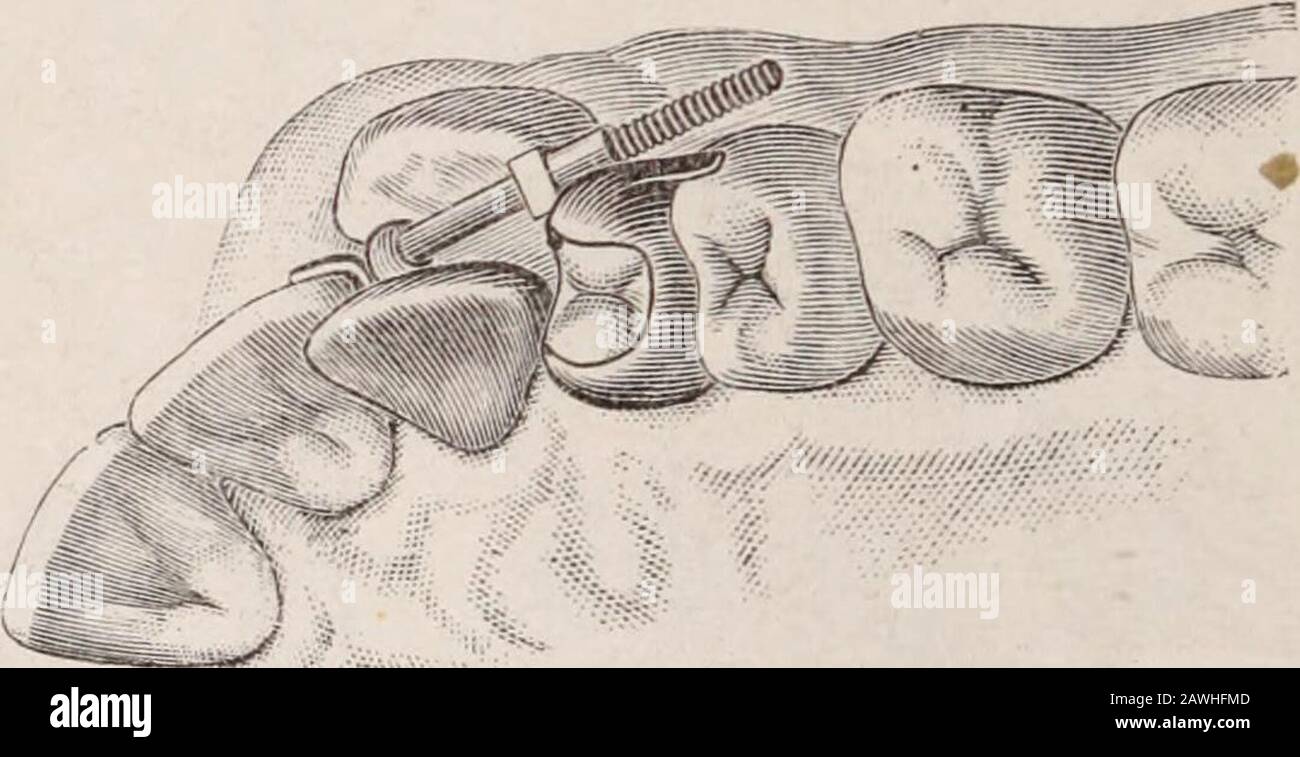Dental cosmos . -tvvo-carat gold, ofabout No. 30 thickness, and fitted snugly to the plaster, and in thecase of the bicuspid the gold was carried up and just a little over thecusps, as shown in Fig. 3. The cap for the lateral incisor was provided with a socket on thelabial surface, into which the bar was fitted, allowing of some move-ment while the teeth were being pushed toward the median line.This cap was also provided with a small arm or lug, which bore againstthe adjoining tooth in such a manner as to prevent the capped toothfrom being pushed out of line while the space between them was be

Image details
Contributor:
The Reading Room / Alamy Stock PhotoImage ID:
2AWHFMDFile size:
7.1 MB (277.8 KB Compressed download)Releases:
Model - no | Property - noDo I need a release?Dimensions:
2205 x 1133 px | 37.3 x 19.2 cm | 14.7 x 7.6 inches | 150dpiMore information:
This image is a public domain image, which means either that copyright has expired in the image or the copyright holder has waived their copyright. Alamy charges you a fee for access to the high resolution copy of the image.
This image could have imperfections as it’s either historical or reportage.
Dental cosmos . -tvvo-carat gold, ofabout No. 30 thickness, and fitted snugly to the plaster, and in thecase of the bicuspid the gold was carried up and just a little over thecusps, as shown in Fig. 3. The cap for the lateral incisor was provided with a socket on thelabial surface, into which the bar was fitted, allowing of some move-ment while the teeth were being pushed toward the median line.This cap was also provided with a small arm or lug, which bore againstthe adjoining tooth in such a manner as to prevent the capped toothfrom being pushed out of line while the space between them was beingenlarged, and insure the movement of all the teeth bodily toward theleft. The nut, which was given one or two turns each day by meansof a small wrench, was placed next to the cap on the bicuspid, whichwas provided with a cylindrical attachment through which the screwpassed. The pressure caused by the tightening of the nut lengthenedthe screw, and thus widened the space for the reception of the cuspid. Fig. 3.. A suitable wrench may be made from a discarded excavator ; ofcourse it is understood that no thread is needed inside the cylindricalattachment on the bicuspid cap, as it is desired that the screw as itis passed through should be free to respond to the pressure of the nut, Fig. 4. The cuspid came down into place as the distance betweenthe bicuspid and lateral was widened, and when it was fully erupted acollar of gold was made which fitted up closely to the neck of the tooth, and a small loop of gold was soldered to the labial surface, to whichwas attached a rubber ligature, which helped to draw the cuspid intoplace more quickly. The ligature was attached to a little gold buttonon a small rubber plate. As mentioned in a previous article, in the use of the screw and nutin connection with the cap used in regulation the force exerted is a